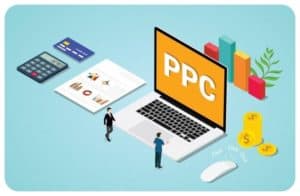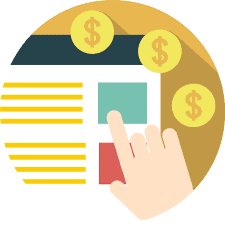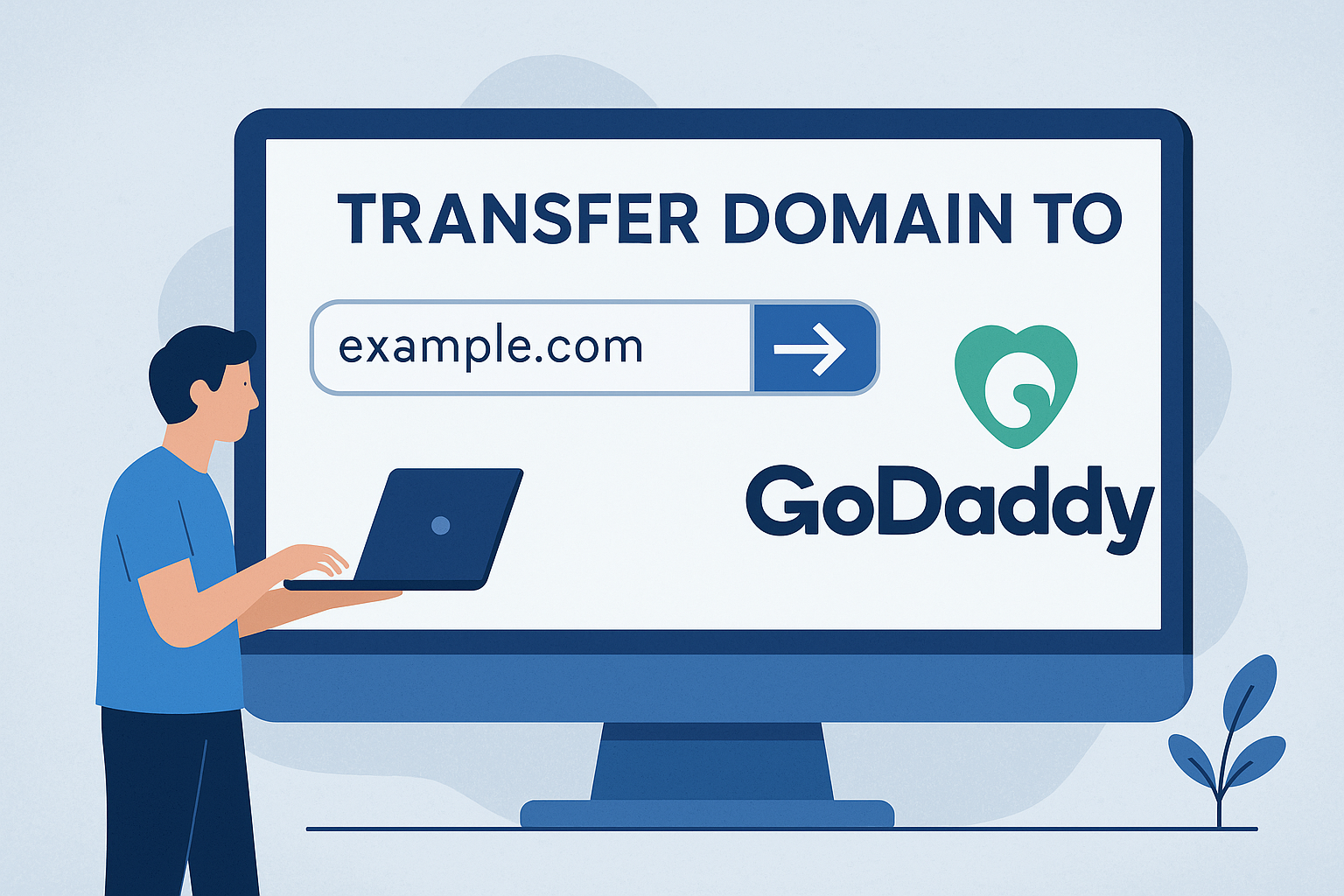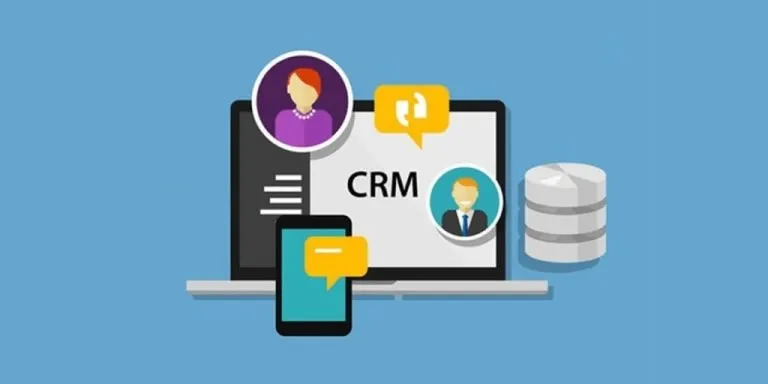Advertising disclosure
Hosting Canada is community-supported. We may earn a commission when you make a purchase through one of our links. Read Disclosure.
How To Monetize A Website
 You know, back in the 90s and early 2000s, it was basically impossible to make enough money to sustain yourself unless you were one of the big, well known sites or ISPs.
You know, back in the 90s and early 2000s, it was basically impossible to make enough money to sustain yourself unless you were one of the big, well known sites or ISPs.
Stuff like Ebay, GumTree, and for some inexplicable reason, the Hampster Dance page, were all pretty popular and did well enough for themselves (well, maybe except the last one).
Thankfully, we’ve moved on from those dark times, and with commerce increasingly moving to the digital world, almost anybody can make a buck off their website . . . assuming they are willing to put some work into it.
This can take the form of almost anything, whether it’s selling your own product, selling ads, doing referral links, or even flipping websites, it’s all part of the brave new world we call the internet.
10 Best Ways to Monetize a Website
That being said, it’s not all rainbows and unicorns, and things don’t come easy or overnight. However, if you’re willing to put in the hard work, and expend the resources, you can very well see yourself making at least some money after the first few months.
If you’re particularly good at what you do, you might even find yourself gaining some moderate success (after all, some sites are flipped for hundreds of thousands if not millions of dollars, so you never know).
So if you’re eager to get started in the world of website monetization, then check out some paths you can take below.
1. Pay-per-Click Advertising
 Probably one of the easiest and most well-known ways of monetizing your website is pay-per-click advertising (sometimes also called cost-per-click).
Probably one of the easiest and most well-known ways of monetizing your website is pay-per-click advertising (sometimes also called cost-per-click).
To boot, the system is relatively straightforward; whenever somebody clicks on one of the ads on your site, you get a certain amount of money, anywhere between $0.05 to $0.5 per click. It’s not a lot, but if you have a lot of traffic it can certainly add up to a large number.
Google AdSense
Alright, so how do you go about getting PPC advertising? Simple: you go with the biggest giant in the advertising space, Google, and more specifically, Google AdSense.
AdSense is incredibly easy to install or setup on your site, since Google’s own algorithm scans your website to determine it’s genre, category and/or niche, and then shows ads that fit or are similar to your content.
This is actually why the money you get per click is variable in an order of magnitude; certain ads are worth more than other ads and that depends a lot on what content you have on your site.
Once you’ve signed up to AdSense, you then just embed their Javascript widget unto wherever you’d like on your site, and you’re basically done! Google will push ads through that widget regardless of where it is on your site; the only thing you need to do is create great content that drives traffic to your site.
The more traffic you have, the more likely you are going to get people clicking on those ads.
Keep in mind that going with one of the popular blogging platforms, generally tends to mean you get a ton of additional metrics. They are also designed with AdSense and other Google tools in mind, so that’s going to take a fair amount of work off your hands.
Of course, if you’d rather not go with Google, there are other companies that offers PPC advertising:
- ☑️ Propeller Ads
☑️ Media.net
☑️ Adsterra
☑️ RevContent
They all function pretty much the same as AdSense although have varying advantages and disadvantages. For example, RevContent is one of the better ones, but they are hard to get into and have a ton of restrictions. On the other hand, Propeller Ads is easy to get into, but some of their ads are a bit spammy and some have pop-ups, which can be annoying.
Ultimately, you should do your research and look at which form of PPC advertising works best for your website. Just because AdSense is the most well known and biggest network doesn’t mean that you should be obliged to go with them. Much like any network, AdSense has its own problems (such as lack of partner control).
2. Selling Ad Space
![]() Another alternative to PPC which is very similar, is directly selling ad space. Instead of going through something like AdSense or RevContent, you can try and make those ad connections directly.
Another alternative to PPC which is very similar, is directly selling ad space. Instead of going through something like AdSense or RevContent, you can try and make those ad connections directly.
Of course, trying to go your own takes up a massive amount of extra time and cuts out the convenience of these ad networks. Thankfully, you are reimbursed for your time in the form of a much better deal and return on these direct deals.
Not only that, but you have a lot more control over the type of ads that show up, and you might even be able to finagle a unique ad that has some relevance to your website.
Ultimately though, if you do decide to go this route, then there are some things you need to know:
CPM
CPM or Cost Per Mille, which means cost per thousand (mille is french for thousand). What this term means is how much they will pay for each 1,000 views or clicks. What this amount ends up being depends wholly on what agreement you make with the the company that wants to advertise.
Media kits are important
A kit with all the statistical and traffic figures of your website will cut down a lot on the extra work you have to do. Just prepare the kit once and then when you approach a marketer the kit will already have done half the work for you, the other half being the actual negotiation and sale.
What kind of ads you want
This is important, as there are different types of ads, and as a basic example there’s video ads, still ads and animated ads. It all depends on what you think your users will be most willing to accept and not drive traffic away. Basically what we’re saying is don’t spam your users with annoying ads.
Patience and motivation
This is a big one. You’re basically working sales at that point, so you’re going to be approaching lots and lots of companies that could potentially advertise with you. That also means that you’ll also likely get a few rejections, so having a thick skin is important.
A website builder
Using something like a website builder can really help cut down on time spent developing the site and making it ready for ads, especially when we’re talking for mobile-friendly versions of your pages.
Probably the biggest thing to consider before jumping into direct ad sales is that you really do need a lot of traffic. Keep in mind that you’ll get paid either per click or for every thousands clicks/views, either way, if you only have 100 people coming to your site daily, that’s not going to add up to a lot of money.
On the other hand, if you have 10,000 or 100,000 daily visitors on your site, the few cents you get here and there add up.
Ultimately, if your site is still small it might not be worth the effort to go through the trouble, so using an ad network first while you find your feet might be a good idea.
3. Sponsored Content
![]() Similar to selling ad space, creating sponsored content is a great way to make an extra buck (or few hundred) for relatively simple work.
Similar to selling ad space, creating sponsored content is a great way to make an extra buck (or few hundred) for relatively simple work.
So what is sponsored content exactly? Well it can essentially be anything that is trying to sell the sponsor’s product, but mostly it tends to be an article or series of articles, sometimes with links to their website or product (which is called an advertorial).
A straight up review of a sponsor’s product is also another option, known as a sponsored review. Yet another option if you have an email newsletter is to include some of their content in your newsletter.
It’s a pretty lucrative field if you can get into it, although keep in mind that it shouldn’t really be the main thing you rely on, especially when starting out. Sure, maybe websites like Buzzfeed can ask for $100,000 per paid sponsored content, and they probably have contacts to the fortune 500 companies, but you’ll probably want to start out smaller.
Approaching local and regional companies is a good start, especially if your following is in the region. It also provides a bit more of a personal touch, which viewers can especially enjoy.
In terms of money though, you can probably expect maybe $750-$1000 per post for sites that have been growing for a year or two. If you have social media you could also realistically expect $100-$200 per post (professional influencers can sometimes ask for thousands per post, so it’s also a lucrative market.)
Thankfully, you don’t really have to do all the work on your own these days and there are a few good sites you can check out if you want to go the route of sponsored content:
- ☑️ Findyourinfluence
☑️ Markerly
☑️ Socialfabric
☑️ TapInfluence
☑️ Webfluential
One last thing we must mention before moving on is that you absolutely have to make it clear to your viewers that the post is sponsored. If you don’t and they found out, you’ll likely lose a lot of trust, viewership and general reputation among companies, who might no longer want to be associated with your bad reputation.
Also, you should always be on the lookout for companies who will ask you to post sponsored content but not mention it. These are the companies whose contact information you need to lose.
4. Sell Your Own Product or Service
 If you have a loyal following, this can be an excellent option to monetize your site, since it doesn’t necessarily require you to spend a long period of time creating posts and the like.
If you have a loyal following, this can be an excellent option to monetize your site, since it doesn’t necessarily require you to spend a long period of time creating posts and the like.
Primarily what you sell will depend a lot on yourself, your time and your budget.
For example if you go for a physical product, then you really have to think about material costs, how much time it’s going to take to make and shipping.
This can literally be anything from tea-cosies to post cards, so there’s really no limit, and even making something that’s uniquely yours (even if it’s not good), can fetch a good price from a follower.
Of course, you could also choose to sell other people’s products without warehousing anything yourself through something like Shopify or BigCartel, but more on that later.
The easier alternative is to sell a digital product or service, that way you only really need to create the thing once and you’re done.
One great example is a website that tracks a specific niche of information, such as a flight tracker, or even something as niche as retro jewelry designers and their new pieces.
Either way, you only need to compile the information once every day or week, and then sell that information to others for a price.If you have some skill in programming, then app and plugin creation is a lucrative field to get into, especially if you’re willing to make custom work. Another option is writing ebooks or the like, especially if you’re specialized in a field.
Or hey, if you’ve got some skill in art, you could always sell graphical goodies like stock photos, illustrations, video effects, or even blog graphics and templates. Point is that you should consider every skill you have as an important part of yourself and your brand.
If you have trouble making your first sale whether it’s a service or your product, take a look at our detailed guide on how to make your first online sale.
5. Create Premium Content
 Another option if you don’t want to directly sell a product or service, is to create premium content that is only available through a membership or paywall.
Another option if you don’t want to directly sell a product or service, is to create premium content that is only available through a membership or paywall.
Again, this can be pretty much anything, but generally you will want to have some free content, with the membership or paid content being longer or slightly more unique.
One fun example is to do an audio version of some of your posts if your blog or site is more personal, or based on your own opinions and analysis.
You can then let the written form of that content be free and have people pay for the audio version. It’s a relatively simple thing to do and you aren’t actually keeping any content away from viewers, you’re just delivering it differently for those who are willing to pay a little bit extra.
The most important thing here is to make a proper analysis of what should and should not be gated. For example, if you believe that certain content won’t really provide a lot of organic traffic through the use of Keywords, you should absolutely gate it.
Not only will it give you additional content for your membership access, it may also provide a sort of ‘velvet rope’ effect for those who are still considering whether to buy in or not.
What is Premium Content
Another question you might ask yourself is “how specific is x content?”; is it something that covers a very specific and exact circumstance that isn’t likely to be found elsewhere? Or is maybe something that has been answered before but not in as much detail?
Either way, you’ll want to gate content that isn’t easy to find so as to give visitors an incentive to purchase a membership plan.
One of the biggest positives of gated content though, is that it creates a great marketing funnel.
Yes, if you left the content open and free more people would see it, but by gating it you create leads which can be used to generate even more sales down the line, even if less people see the content.
Even then, as I mentioned above, you don’t have to necessarily cut them off from the content completely; a different delivery method such as audio, or PDF might be enough to push a visitor to buy a membership plan for a couple of bucks a month.
6. Donation Based Monetization
 If you don’t necessarily feel like gating content or creating a membership site, then just simply asking for donations can be a good option.
If you don’t necessarily feel like gating content or creating a membership site, then just simply asking for donations can be a good option.
Granted, you might not necessarily make the big bucks like you would with ad space or the like, but with a solid following you can make enough to maintain the website and a regular stream of content.
So how would you go about it? Well, you can either ask for direct donations through something like Paypal or you can go with a subscription model through another site like Patreon, Buymeacoffe or Ko-Fi (although you can certainly do one-offs with those as well).
Regardless of which of the options you pick, consider how you want to ask for donations. For example, do you want to have a specific donation page that viewers get direct to? If you do, make sure that it lists everything they get, and have a clear call to action.
Similarly, make sure the donation buttons are clear and that the page is mobile-friendly. Finally, you can maybe suggest amounts for one-off donations, if you feel comfortable with that.
If you don’t want to go with a specific donation page, there’s absolutely nothing wrong with just having a sidebar section with the donation buttons, membership options, and maybe a quick explainer of what people get.
Ultimately, neither choice is better than the other, and it all depends on the personality of yourself and the website. One thing we would suggest though is to remind people that donations help with keeping the site ad-free, which is a nice incentive that makes people feel as if they are part of a community.
7. Monetize Your Expertise
 One great option for monetizing your site is to leverage any specific or special experience and skills you have and offer them to others.
One great option for monetizing your site is to leverage any specific or special experience and skills you have and offer them to others.
In fact, just having a portfolio website leads to freelancers charging 65% more than those without websites.
So what are some things you can offer in terms of expertise? Well:
- ☑️ Writing, editing and proofreading
☑️ SEO expertise
☑️ Web development and design
☑️ General art and design
☑️ Virtual assistant services
☑️ Software development
☑️ Audio work such as production or mastering
☑️ Consulting services in your field
These are some great general skills of which you’ll probably have at least one of. You can absolutely leverage your experience and sell your skill through your website.
Another idea is to offer direct one-on-one coaching. Depending on how many years of experience you have in your field, and the reputation you’ve gained, there’s almost certainly somebody out there who would be willing to pay by the hour to get your thoughts on things.
If you also enjoy teaching others, this is a great way to get a bit of extra cash while doing something you enjoy and imparting your knowledge to following generations.
Of course, there’s also the option of creating a course rather than going with the one-on-one option. It does take more up-front work to get things going, but once you’ve set up the course, there’s very little involved other than marketing yourself and your course.
That being said, if you really enjoy the human element to things, you could always have in-person courses, especially with things such as retreats, workshops or speaking engagements.
8. Set Up a Dropshipping Store
 You probably hear the word ‘store’ and think “Oh good lord no, I don’t want to have to deal with inventory management, shipping, logistics, etc.” and we get that, which is why we suggest dropshipping instead.
You probably hear the word ‘store’ and think “Oh good lord no, I don’t want to have to deal with inventory management, shipping, logistics, etc.” and we get that, which is why we suggest dropshipping instead.
With dropshipping you don’t actually have any of the inventory; it’s held and shipped directly by the supplier that you’ve made a deal with.
As such, you only really need to worry about the ‘storefront’ part of the store, which is picking the inventory, making a nice website and marketing your online store and its products.
If you have any more misconceptions about dropshipping feel free to check out our dropshipping guide!
It’s a great middle-of-the-ground solution to opening up your own store that doesn’t require physical storage space, which can absolutely increase the cost of your business.
Of course, there are downsides to dropshipping. For example, you have very little control over the product, how it’s boxed and how it’s shipped.
If a problem arises, you have to wholly rely on your ability to communicate with the supplier, and if you don’t have a good relationship with them, or they can’t fix the issue, then you might lose a customer or reputation.
Another issue is that you tend to lose out on the kind of branding opportunities other types of stores have. Dropshipping boxes tend to be plain and unbranded, or in the worst case, branded with the supplier’s name.
Not only that, but whereas other store types can put flyers, coupons, or other forms of brand marketing, you cannot, and therefore miss out.
The biggest issue though is that dropshipping tends to rely a lot on impulse buying, as well as a good advertising campaign.
This isn’t necessarily a huge problem that needs to be overcome, just be aware that a substantial portion of your costs will have to go to marketing, so make sure you know what you are doing, or have somebody who does.
Recommended Service: Shopify
If you do end up going the dropshipping route, we generally recommend using something like Shopify, since it tends to make life much easier.
Depending on the Shopify plan you go for, you can get anything from a simple storefront, to more complicated cart recovery, advanced reports, and automatically calculated shipping rates, which is pretty handy.
In essence the platform allows you to run a digital shop without needing a bunch of extra people to help, especially since it’s pretty straightforward.
Of course, Shopify isn’t perfect, and there are transaction fees they take (from 3%-0.5% depending on the plan). On top of that, Shopify is not really set up to distribute content like a blog, so while you certainly can do blog posts, it’s not the easiest.
The best thing to do is have your own blog and then just link to your shopify page, or use a widget that shows the stuff you want to sell.
Related Read: Shopify vs. WooCommerce
9. Affiliate Marketing
 Affiliate marketing is a pretty big field right now, and probably one of the best ways to make passive income, especially if you have some great writers and a well-designed website.
Affiliate marketing is a pretty big field right now, and probably one of the best ways to make passive income, especially if you have some great writers and a well-designed website.
The way that affiliate marketing works is pretty straightforward: you make a commission for every time you refer a service or product.
So say for example that you review a book that you thought was pretty good.
What you can do is place a referral link to something like the Amazon listing for that book, and get a commission every time somebody buys that book from you.
Interestingly, when it comes to Amazon that link actually creates a referral cookie, so anything the person buys within a 24 hour period after using that link you get a cut of . . . assuming they don’t clink somebody else’s link first.
Of course, Amazon is the big dog here, but given Amazon’s slashing of commission rates, it’s become much more profitable to go directly to the seller.
While this might not necessarily work well for books unless the author or publisher has their own site, a lot of software, makeup & fashion brands, hobby brands, pretty much anything you can think of either already has an affiliate program, or would be willing to set something up with you, assuming your site gets a lot of traffic.
Before you get into this lucrative market though, you need to remember one thing: always disclose your referral links. There’s nothing that’s going to lose you repeat visitors than being sleazy, and not making it clear that you are using referral links might make it seem like you are only recommending the product to make money.
In a similar vein, always recommend products that your viewers care about, or else you risk running into the same problem.
Recommended Service: Share-a-Sale
One big issue with trying to directly contact merchants and companies directly, is that it’s a massive amount of leg work that you have to do.
At the very least, finding affiliate programs can be difficult, let alone actually contacting a company without one to set one up.
An alternative to that legwork is to use an affiliate marketing platform, and we’d probably suggest Share-a-Sale as one of the better ones. Truth is, they don’t necessarily focus on the kind of brands big networks want, but instead focus on stuff that is a bit more unique and might interest visitors of smaller and mid-sized websites.
They also have a network of over 4,500 merchants in a reasonably big variety of niches such as fashion and art & music, so you’ll be sure to find a category without too much hassle.
All that being said, there certainly are downsides. For example, they do take their cut, and so you won’t get as much of a commission if you had direct deals with merchants and businesses. Another issue is that you can’t withdraw to a PayPal account, and can only receive money through direct deposit or through a check, both of which might be a hassle for some.
Nonetheless, it’s a pretty great service if you want to go through the affiliate marketing route.
10. Flip Your Website
If you’re not interested in long term website management and ownership, one option is to flip your website.
Website flipping works the same way that house flipping does: you buy a digital property that needs a bit of work, do that required work and turn around and sell it for a profit. Or, alternatively you can start completely from scratch and then sell it once you have a big enough following.
Both ways work, although if you have the money to purchase an already existing site, and the experience to fix it, then that will end up bringing in the most profit.
As for how much money that can make, a flipped site can go from anywhere between 20-50 times it’s monthly income, which is quite staggering. Of course, you also make the money you do while the website is being fixed and monetized, so don’t forget to include that in your calculations.
While affiliate and ecommerce sites tend to sell the most and have the highest values, you can still sell a personal blog or small website, especially if it’s been around for a while and has a strong URL. There’s also quite a few free blogging sites you can get started on; there’s no better time than the present.
Of course, going around and looking for people to buy your site is a big pain, especially if you don’t already have a reputation. Thankfully, just like with affiliate marketing, there are a few platforms that take out all the legwork for you. Two really great sites are Empire Flippers and Flippa, so check those out.
Recommended Service: HostPapa
If you do end up going the route of building your own website from scratch, we suggest HostPapa for your hosting.
There’s no point having thousands or hundreds of thousands of visitors to your site if it can’t handle it, and HostPapa is well received in terms of support and stability.
Not only that but it has a ton of user-friendly tools, including pre-installed Jetpack and WordPress, which is pretty handy since WordPress is one of the most used platforms out there.
On top of that the basic plan starts you off with two websites, free domain registration and 100GB of SSD. Of course, if you plan or already have a semi-sizable website empire, going with their higher end plans gives you the ability to host an unlimited number of sites, and get an unlimited amount of storage space, which is a pretty great deal for about $20/month.
There are downsides to HostPapa though, such as no free backups, so you’ll have to handle that on your own. A bigger issue is that you will have to commit to the full length contracts, which can be a bit terrifying if you’re starting out but they are reliable. If you’re ok with a longer commitment, they have some of the best prices and features in the industry.
Related Read: How To Host Your Own Website
How Not To Monetize a Website
 Selling Links
Selling Links
One sure fire way to get your site dinged by Google’s SEO algorithm is to sell links. It used to be a pretty popular method to make some extra cash, but Google has been clamping down on it a lot recently.
In fact, even their spam team has put a stop to any link schemes.
If you aren’t familiar with selling links, it’s basically what it says on the box: You accept money from some other entity to link to your website, even if you wouldn’t necessarily link back to them.
It helps them rank better and you get some money and your own ding for linking back to a somewhat terrible site.
There’s also the reverse where you can offer another site money to link back to yourself, just so you can raise the rankings on your own site.
How is this different from affiliate links? Well, affiliate links just give you a commission, it’s not an outright payment, and it’s different from ads because they are clearly labeled so.
That’s actually the best way to protect yourself (1) always be clear if you use referral or affiliate links and (2) don’t accept money from another website to link back to theirs, you could get your site deranked.
RSS Feed Ads
RSS Feeds are pretty old school these days, so honestly, just dropping them altogether might be the best option. Otherwise, just don’t put ads in them; it clutters everything up and just seems pretty sleazy.
Infolinks
You know that popup you see sometimes when you hover over a link? For example when you’re on Wikipedia or the like? Well, that’s called an infolink, and some smart cookie thought it would be a good idea to put an ad in them . . . back in the 2000s.
Seriously, it’s not only an antiquated practice, it’s also incredibly annoying to most users, and 100% not worth destroying your sites viewership and reputation over.
Conclusion
As you can see, there are actually an absolute ton of different options available to you if you’re willing to put the hard work in. That’s actually one of the great things about eCommerce these days; you can find a niche and do relatively well in it, even if the field is semi-crowded.
Of course, ultimately your visitors are your main source of income, so never forget them. Always do your best to create content that both of you will enjoy, otherwise you’ll burn out or possibly lose a ton of viewers. Get a good domain, get a good web host even if free, build a good website, and just do your thing.
More importantly, don’t approach the list above as some sort of checkbox for things to do; you don’t need to do all of them. In-fact, most sites tend to specialize in one of the things above, and do reasonably well. It’s only when you start splitting your focus that things go south.
Either way, we hope you’ve found this informative and good luck on your profitable endeavours!













